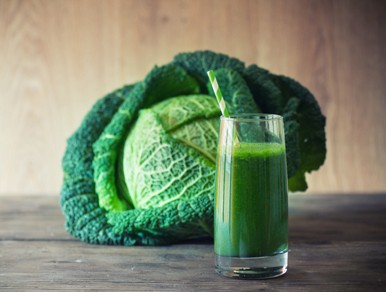
Once prevalent among a relatively small percentage of healthconscious consumers, juicing is garnering mainstream momentum. Incorporating fresh juice into the diet may help some clients meet fruit and vegetable needs, but why and how they “juice” can mean the difference between healthy and harmful.
Juicing—used synonymously with “juice fasting” or cleansing—refers to limiting the diet to only the juice extracted from fresh fruit and vegetables for a set amount of time. Some weight-loss diets advocate juicing anywhere from two days to several weeks, while the 2010 film Fat, Sick & Nearly Dead hailed 60-day juice fasts as the path to health.
Clinical information on “juice cleanses” is extremely limited, and research that looks at the health effects of concentrated juice powders includes mainly studies with small sample sizes of less than 100 participants. There is, however, there is no shortage of research that supports the positive health benefits of whole fruit and vegetable consumption:
- Evidence Analysis Questions related to fruit intake
- Evidence Analysis Questions related to Vegetable Intake
- Dietary Guidelines 2010 EAL: “In adults, what is the relationship between the intake of vegetables and fruits, not including juice, and selected health outcomes?”
While there is no advantage to consuming juice over whole fruit with respect to the bioavailability of nutrients, a sudden increase in fruit and vegetable consumption may lead to gas, bloating or diarrhea. Juicing could also have potential food-medication interactions. For example, increasing foods high in vitamin K, such as spinach and kale, may affect anti-blood clotting medication. And anyone with a health condition such as kidney disease, diabetes or hypertension should consult an RD before making significant dietary changes.
Some juice-only diets that severely restrict calories may result in short-term weight loss, but the lack of protein would make it difficult to maintain muscle mass. Other potential nutrient deficiencies include fatsoluble vitamins D and E, essential fatty acids, B vitamins and, particularly if the pulp is strained out of the juice, fiber. Juicing can also lead to weight gain if other factors in the diet and activity level are unchanged.
While creative juice concoctions are appearing on restaurant menus and in juice bars across the country, many consumers are purchasing their own juicers—ranging from manual presses designed primarily for citrus fruits to pricier power blenders that can extract liquids and pulp from tougher produce, such as carrots, beets and leafy greens.
Always wash fruits and vegetables thoroughly before juicing. Remember that fresh juice can quickly develop harmful bacteria, so only make enough for what you can drink immediately. Aim for a 3-to-1 vegetable-to-fruit ratio, and the less pulp you strain, the higher the fiber content. For a more substantial snack, blend it with low-fat milk or yogurt and call it a smoothie.






